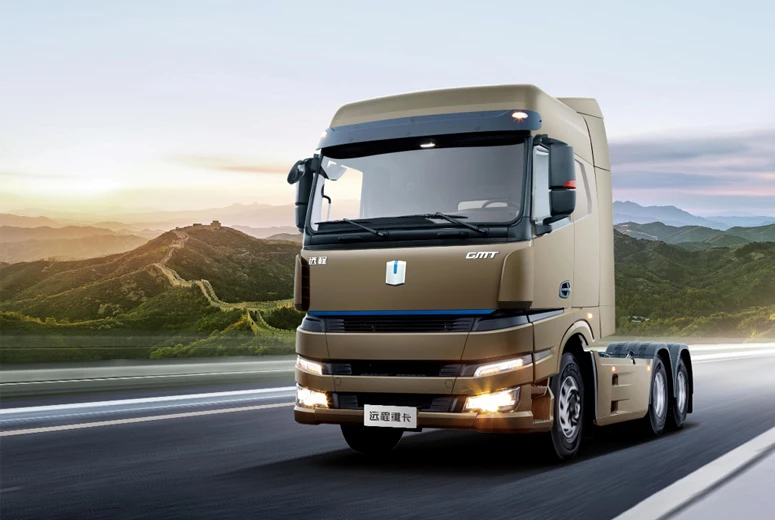automatic transmission types
Understanding Automatic Transmission Types A Comprehensive Guide
Automatic transmissions have revolutionized the way we drive, providing a convenient and efficient alternative to traditional manual shifting. These systems allow for seamless gear changes without requiring the driver to operate a clutch pedal or manual shifter. With various types of automatic transmissions available in the market, understanding their differences is essential for anyone looking to purchase a vehicle or simply interested in automotive technology.
1. Traditional Automatic Transmission
The most common type of automatic transmission is the traditional automatic, often referred to as a torque converter transmission. This system utilizes a torque converter to manage power delivery from the engine to the transmission. As the vehicle accelerates, the transmission automatically shifts through its pre-defined gear ratios. This type of transmission typically includes anywhere from four to ten gears, providing smooth shifts and efficient performance.
Torque converter transmissions are known for their durability and ease of use, making them popular in many vehicles, from sedans to trucks. However, one downside is their potential to be less fuel-efficient compared to newer technologies due to the hydraulic systems involved.
2. Continuously Variable Transmission (CVT)
Continuously Variable Transmissions (CVTs) offer a unique approach to gear shifting. Unlike traditional automatic transmissions that shift through distinct gears, a CVT uses a system of pulleys and belts to provide an infinite number of gear ratios. This allows the engine to operate at its optimal RPM, enhancing fuel efficiency and driving comfort.
CVTs are increasingly common in hybrid and small vehicles, as they can significantly improve fuel economy. However, some drivers find the driving experience to be less engaging, as there are no distinct gear changes, which can lead to a rubber band feeling during acceleration.
3. Dual-Clutch Transmission (DCT)
Dual-Clutch Transmissions (DCTs) blend the benefits of manual and automatic transmissions
. They employ two separate clutches for even and odd gears, allowing for lightning-fast gear shifts. When one gear is engaged, the next gear is pre-selected, enabling almost instantaneous shifts without any lag.automatic transmission types

DCTs provide a sporty driving experience, making them the transmission of choice for many performance-oriented vehicles. Despite their advantages, they can sometimes be less smooth than traditional automatics at lower speeds, leading to a jerky driving sensation in stop-and-go traffic.
4. Automated Manual Transmission (AMT)
Automated Manual Transmissions (AMTs) are essentially manual transmissions that have been automated. They use an electronic control unit to manage the clutch and gear changes, allowing for automatic shifting while retaining the engaging nature of a manual transmission.
AMTs can be found in various vehicles, particularly in economy and budget models. While they offer better fuel efficiency and reduced weight, AMTs may not deliver the same performance or smoothness as other types of automatics, making them less desirable for some drivers.
5. Hybrid and Electric Vehicle Transmissions
With the rise of hybrid and electric vehicles, new transmission technologies are emerging. Many hybrids utilize a CVT to optimize efficiency and performance, while fully electric vehicles (EVs) often forgo conventional transmissions altogether. Instead, they typically use a single-speed transmission because of the electric motor's ability to provide consistent power across a wide RPM range.
As the automotive industry continues to evolve, the development of more advanced transmission systems is expected. These advancements aim to enhance efficiency, performance, and overall driving experience.
Conclusion
Choosing the right type of automatic transmission can significantly impact your driving experience. Whether you prioritize fuel efficiency, performance, or ease of use, understanding the differences between these transmission types will help you make an informed decision. As technology progresses, new innovations in transmission design promise to keep reshaping the way we interact with our vehicles, making it an exciting time for automotive enthusiasts and consumers alike. Whether you opt for a traditional automatic, a CVT, or a more advanced system, each type of transmission offers its own set of advantages to cater to diverse driving preferences.
-
SINOTRUK HOWO 84 Electric Dump Truck for Eco-Friendly Heavy HaulingNewsJul.26,2025
-
The Fast 16-Gear Manual Transmission Assembly for Heavy TrucksNewsJul.25,2025
-
Mercedes Benz Actros 1848 42 Tractor Truck for Sale - Reliable PerformanceNewsJul.24,2025
-
High-Quality Water Pump Assembly for Sinotruk Trucks – Durable & ReliableNewsJul.23,2025
-
Premium Truck Engine Antifreeze Coolant Fluid for Heavy Duty VehiclesNewsJul.22,2025
-
FOTON View G7 Mini Bus: Affordable & Spacious TransportNewsJul.22,2025
Popular products

























